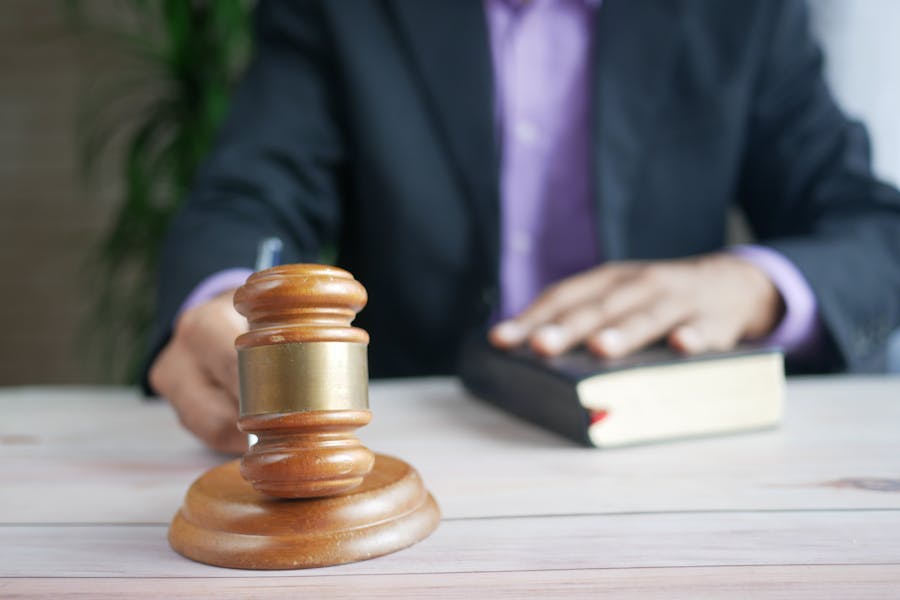Stare decisis is Latin for “to stand by things decided.” In modern legal practice—especially in common-law systems like the United States and the United Kingdom—it means courts generally follow their own prior decisions and those of higher courts when the same legal question comes up again. The doctrine is not a rigid command to copy the past; it is a strong presumption in favor of stability and consistency, tempered by the court’s duty to correct serious legal mistakes.
Why does this matter? Because law is supposed to be predictable. Businesses sign contracts, people arrange their lives, and governments set policy in reliance on what courts have already said the law means. Stare decisis supports that reliance interest. At the same time, societies change, facts change, and sometimes past rulings prove unworkable or poorly reasoned. When that happens, courts may limit a precedent, distinguish it, or overrule it entirely.
What follows is a student-friendly, practice-aware guide to what stare decisis is, how it works step by step, where it comes from, and why people argue so passionately about it in high-profile cases.
The definition—plus two essential distinctions
At its core, stare decisis is the judicial habit of following precedent. Two distinctions make the doctrine concrete:
Vertical vs. horizontal precedent
- Vertical precedent binds lower courts to follow higher courts in the same hierarchy. A federal district court must follow the U.S. Supreme Court; a state trial court must follow that state’s supreme court.
- Horizontal precedent describes a court’s practice of following its own prior decisions (for example, a federal circuit panel following earlier circuit cases unless there is an en banc or Supreme Court change).
Binding vs. persuasive authority
- Binding precedent comes from a higher court in your jurisdiction on the same legal issue.
- Persuasive precedent comes from other jurisdictions, parallel courts, or well-reasoned dicta; it can influence a court but does not compel a result.
These categories give lawyers and judges a working map: what must be followed, what can be considered, and when there is room to move.
Where the doctrine comes from
Common-law courts historically developed law case by case. Over centuries, the habit of following earlier holdings became a principle, then a doctrine. In the U.S., stare decisis is not written into the Constitution, but the Supreme Court repeatedly describes it as a “foundational principle” of adjudication. The American Bar Association and leading treatises echo the same theme: precedent promotes the rule of law by making like cases come out alike unless a court has a good, openly stated reason to depart.
How stare decisis actually works in court (a practical, step-by-step view)
- Identify the precise legal question.
Courts read the facts narrowly to isolate the rule that truly matters. Precedent only “binds” on points actually decided.
- Collect potentially controlling decisions.
Lawyers search for higher-court cases in the same jurisdiction; if none exist, they gather persuasive cases from other jurisdictions and secondary sources.
- Extract the holding.
A holding is the legal principle necessary to the outcome, not every sentence in the opinion. Dicta—helpful but unnecessary commentary—doesn’t bind later courts.
- Check vertical status and hierarchy.
If a state supreme court has spoken on a state-law question, lower state courts are bound. If the U.S. Supreme Court has spoken on a federal question, all lower federal and state courts are bound.
- Determine whether the case is materially distinguishable.
If the facts differ in ways that matter to the rule’s purpose, the court may “distinguish” the earlier case and reach a different result without rejecting the precedent.
- Consider whether the precedent should be limited or overruled.
Overruling is rare and serious. Courts weigh factors such as:
- Workability (is the rule clear and administrable?),
- Reliance (have people ordered their affairs around it?),
- Doctrinal fit (is the precedent consistent with related areas of law?),
- Quality of reasoning (was the earlier decision persuasive and faithful to text, history, and structure?),
- Changed legal or factual landscape (have circumstances undermined the old rule?).
- Workability (is the rule clear and administrable?),
- Explain the path openly.
Whether following, distinguishing, limiting, or overruling, a court must articulate reasons. That transparency is part of the doctrine’s legitimacy.
Famous waypoints: precedent followed, limited, or overruled
- Marbury v. Madison (1803) established judicial review. Subsequent courts have treated Marbury as bedrock—the kind of precedent that becomes deeply embedded in legal structure.
- Plessy v. Ferguson (1896) upheld “separate but equal.” It stood for decades, but was ultimately overruled by Brown v. Board of Education (1954), which recognized segregation by race in public schools as unconstitutional. Brown is often cited to show that adherence to precedent has limits when a precedent is unjust and unworkable.
- Erie Railroad v. Tompkins (1938) overruled Swift v. Tyson and reshaped federal courts’ role in diversity cases, demonstrating how the Court may abandon a long-standing but problematic framework to restore coherence.
- Miranda v. Arizona (1966) announced safeguards for custodial interrogation. Decades later, Dickerson v. United States (2000) reaffirmed Miranda despite criticism, invoking stare decisis and reliance.
- Roe v. Wade (1973) recognized a constitutional right to abortion; Planned Parenthood v. Casey (1992) largely reaffirmed it on stare decisis grounds; Dobbs v. Jackson Women’s Health Organization (2022) overruled both, emphasizing that precedent’s force is not absolute and stressing the factors of reasoning, history, and federalism.
- Janus v. AFSCME (2018) overruled Abood on union agency fees, citing doctrinal inconsistency and changes in First Amendment jurisprudence.
Together, these examples show the doctrine’s twin commitments: stability where a rule has proved sound and reliance is deep, and correction where a precedent is unsound, unworkable, or out of step with law and facts.
Why the doctrine exists: three core values
- Stability and predictability
People can plan contracts, investments, and life choices when they can forecast what a court will do.
- Equality and fairness
Like cases should be treated alike. Precedent pushes courts toward even-handedness rather than ad-hoc decision making.
- Judicial restraint and legitimacy
Following precedent disciplines courts to justify departures openly, which in turn supports the judiciary’s credibility.
Why critics push back: principled objections
- Bad precedents can entrench injustice
Plessy is the classic cautionary tale. A mistaken rule can inflict real harm if courts cling to it simply because it is old.
- Doctrinal drift and mixed signals
When precedents accumulate inconsistently, lower courts and citizens get a patchwork of tests and exceptions.
- Constitutional context
Many Justices say stare decisis is at its “weakest” in constitutional cases because legislatures cannot easily correct the Court’s mistakes. In statutory cases, by contrast, Congress or a state legislature can amend the statute—so the Court tends to respect statutory precedent more.
The modern debate is not between “follow precedent” and “ignore precedent,” but over how strong the presumption should be and what counts as a sufficient reason to depart.
How lawyers use stare decisis in practice
- Framing the issue: The narrower the question, the more likely a favorable precedent is binding; the broader the question, the more room to distinguish.
- Selecting authorities: Start with binding precedent in your jurisdiction. If there is a gap, stack persuasive authorities from sister courts and high-quality secondary sources.
- Arguing analogy vs. distinction: If precedent helps you, show how the facts align with the earlier case’s logic. If it hurts you, isolate factual or doctrinal differences that make application unfair or unworkable.
- Building the record: When asking a court to overrule precedent, develop facts and scholarship demonstrating unworkability, minimal reliance, and doctrinal inconsistency.
- Respecting hierarchy: Trial and intermediate appellate courts rarely overrule their own higher courts. If an argument requires rejecting a high-court precedent, preserve it for review but pursue narrower, case-specific routes (distinguish, limit, or lean on intervening Supreme Court or en banc decisions).
Binding vs. persuasive in a nutshell
- A federal district court in Texas must follow the Fifth Circuit and the U.S. Supreme Court. A Ninth Circuit case is persuasive, not binding, unless the Fifth Circuit has no case on point and the reasoning fits.
- A state trial court is bound by its own state’s appellate and supreme courts on state law. On federal questions, it is bound by the U.S. Supreme Court and guided (but not bound) by federal circuit opinions unless its own state high court has spoken differently and the issue is one where state courts are free to interpret state law independently.
Understanding these lanes prevents “citation salad” and focuses a brief on the authorities a judge must—or is most likely to—follow.
How precedent evolves without being overruled
Courts do not only “follow” or “overrule.” They also:
- Distinguish: Identify material factual differences that make a prior rule inapplicable.
- Limit: Confine a precedent to its core facts, preventing gradual creep.
- Clarify: Harmonize overlapping lines of cases by articulating a clearer test.
- Signal: Write concurrences or dissents inviting future litigants to bring better vehicles for reconsideration.
This incrementalism explains how doctrine can adapt over time while still honoring the values of stability and fairness.
The reliance interest: why timing matters
Reliance is central. If individuals, businesses, and governments have arranged their affairs around a precedent—drafted contracts, built compliance systems, structured family planning—sudden reversal can disrupt lives and investments. Courts ask: how widespread is reliance, and can it be unwound without undue harm? A precedent with deep reliance may be sticky even if some Justices doubt its original reasoning.
A software metaphor helps: in product development, teams tolerate known quirks because ripping them out right away would break customers’ workflows. That trade-off resembles legal reliance. In project management discussions of Technical Debt in Agile, teams weigh the cost of immediate refactoring against the benefits of stability; courts make analogous trade-offs when they decide whether to keep, tweak, or replace a precedent.
Stare decisis across legal families
- Common-law systems (U.S., U.K., Canada, Australia): Precedent is central; vertical precedent is binding; horizontal adherence is strong but not absolute.
- Civil-law systems (France, Germany, many others): Codes dominate; judicial decisions are influential but formally persuasive rather than binding. In practice, high-court rulings still shape outcomes, demonstrating that the gravitational pull of precedent exists even where doctrine is looser.
International courts and tribunals sit somewhere in between, often citing earlier decisions for consistency while reserving freedom to adjust.
2025 pressures on precedent
Contemporary disputes highlight the doctrine’s flexibility and strain:
- Technology and privacy: Courts face novel questions about AI, biometric surveillance, geofence warrants, and digital searches. Precedents drafted for physical papers and places may require adaptation without losing their constitutional core.
- Administrative law: Ongoing re-examination of deference doctrines can shift how agencies interpret statutes, putting old regulatory precedents under stress.
- Speech and platforms: Cases involving online content moderation force courts to map centuries-old free-speech principles onto private digital spaces and global networks.
These areas show stare decisis at work: courts mine earlier principles for analogies, distinguish where needed, and sometimes reset doctrine when earlier rules cannot scale to new realities.
Advantages and criticisms—balanced and concrete
Advantages
- Predictability: Clients can plan; governments can govern.
- Efficiency: Courts need not reinvent rules in every case.
- Equality: Similar cases get similar outcomes.
- Restraint: Reasons are required to depart, checking judicial will.
Criticisms
- Inertia: Flawed rules can linger, harming people until the Court has a suitable case to change course.
- Complexity: Layers of precedents can create tests within tests, confusing lower courts and citizens.
- Constitutional asymmetry: If stare decisis is weakest in constitutional cases, that invites debate over how quickly the Court should correct perceived mistakes versus honor stability.
A healthy doctrine keeps both sides in view: stability as a default, correction as a carefully justified exception.
Mini-guide for students: how to brief stare decisis on an exam
- State the issue narrowly.
- Identify binding precedent and extract the holding.
- Assess whether facts are materially the same.
- If adverse precedent exists, argue distinction or limitation before leaping to overruling.
- If arguing for overruling, apply the standard factors: workability, reliance, doctrinal fit, reasoning quality, changed law/facts.
- Conclude with a clean rule statement the grader could adopt.
Closing thought
The doctrine of stare decisis is the legal system’s memory. It ensures that today’s answer does not depend on the luck of the draw—who your judge happens to be or how loud the headlines are. At the same time, it does not freeze the law in amber. Good doctrine balances continuity with correction, explaining clearly when the law will hold steady and when it will change. When courts get that balance right, they do more than decide a single dispute; they reinforce the rule of law itself.
FAQ’s
What does “stare decisis” literally mean?
“To stand by things decided.” It is a presumption of following precedent, not a mechanical rule.
Can courts overrule precedent?
Yes, but they do so cautiously and with reasons—often invoking workability, reliance, doctrinal coherence, and changed legal or factual circumstances.
Is stare decisis used worldwide?
All courts value consistency, but common-law systems give precedent a more formal, binding role than most civil-law systems.
Does the doctrine apply equally to constitutional and statutory cases?
No. The U.S. Supreme Court often says stare decisis is strongest in statutory cases (because legislatures can correct the Court) and comparatively weaker in constitutional cases (because the Court itself must fix its mistakes).
What is the difference between binding and persuasive precedent?
Binding comes from a higher court in the same system on the same issue; persuasive can influence but does not compel, such as decisions from other jurisdictions or parallel courts.
If lower courts disagree with a higher-court precedent, can they ignore it?
No. They must follow it or distinguish it in good faith. Overruling is for the higher court.
Robert Stewart is a seasoned law blog writer with a passion for translating complex legal concepts into accessible, informative content. With a keen eye for detail and a knack for storytelling, Robert crafts engaging articles that educate and empower readers in the realm of law.
Drawing upon his extensive experience in the legal field, Robert brings a wealth of knowledge to his writing, covering a diverse range of topics including personal injury, family law, criminal defense, and more. His articles combine thorough research with clear, concise language, making them valuable resources for both legal professionals and laypeople alike.


